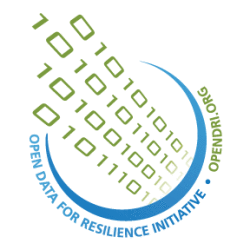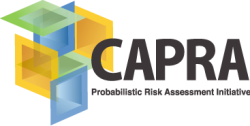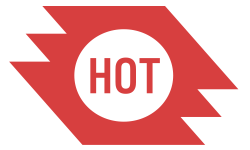The following are the training sessions and community of practice meetings information. These events will take place on July 5-6, 2012.
GeoNode & SAFE
 GeoNode is an open-source platform that facilitates the creation, sharing and collaborative use of geospatial data. The tool is build upon mature and free open-source software and is designed to allow non-technical users to easily share their data and use it to create interactive maps. GeoNode surpasses existing spatial data infrastructure solutions by integrating robust social and cartographic tools.
GeoNode is an open-source platform that facilitates the creation, sharing and collaborative use of geospatial data. The tool is build upon mature and free open-source software and is designed to allow non-technical users to easily share their data and use it to create interactive maps. GeoNode surpasses existing spatial data infrastructure solutions by integrating robust social and cartographic tools.
This training will cover the basics of GeoNode and show how it works in tandem to support CAPRA and SAFE. GeoNode provides the data management for CAPRA, and SAFE is built within the GeoNode tool framework.
To effectively prepare for future floods or earthquakes you must first understand the likely impacts that need to be managed. Scenario Assessment For Emergencies (SAFE) provides a simple but rigorous way to combine data from scientists, local governments and communities to provide insights into the likely impacts of future disaster events.
SAFE is a suite of innovative and simple web-based open-source tools aimed at helping decision makers understand the risk of natural hazards and build resilience. The vision is to be able to rapidly customize for a given stakeholder the presentation of risk information with an interactive, decision oriented tool. The tool promotes the enhanced capacity to manage and use geospatial data. The tool can be used for rapid post-disaster impact estimation, contingency planning, infrastructure / spatial planning and multi-hazard impact assessment.
Anyone with basic computer skills can quickly learn to use SAFE to explore the potential impacts of a disaster event and to produce maps and reports of these impacts. The software leads a user through the process and has tools to estimate the likely damage that a hazard will cause to people and critical infrastructure such as schools, hospitals, roads, etc. SAFE enables the more advanced users to add data from new sectors.
GeoNode and SAFE are part of the Open Data for Resilience Initiative (OpenDRI), a GFDRR initiative that promotes the sharing of hazard and risk data.
CAPRA
 This training session will consist of a general introduction on risk assessment followed by a session specifically on CAPRA.
This training session will consist of a general introduction on risk assessment followed by a session specifically on CAPRA.
CAPRA is a free and open source platform for risk analysis and decision making, which applies probabilistic techniques to hazard and loss assessment. Multi-hazard information is combined with exposure and physical vulnerability data. It was developed by experts to consolidate hazard and risk assessment methodologies and raise risk management awareness.
CAPRA evaluates risk in terms of physical damage and estimates direct economic and human losses. It uses a display platform geographical information system (GIS) to estimate the disaster risk of earthquakes, hurricanes, floods, landslides, and volcanoes. CAPRA uses a multi-hazard risk approach allowing users to determine the risk accumulated from more than one hazard and analyzing several exposure portfolios of infrastructure.
The CAPRA suite of software includes hazard mapping, risk assessment and cost-benefit analysis tools to support pro-active risk management. It can also be used to design risk-financing strategies.
Global Earthquake Model (GEM)
 Global Earthquake Model (GEM) will be showcasing one of its software tools –OpenQuake. OpenQuake is an open source application for calculating seismic hazard and risk. OpenQuake will serve as the engine of GEM’s risk assessment platform OpenGEM, whose various components are being developed by hundreds of collaborators and organisations worldwide. OpenQuake has users from around the globe that are active in the fields of earthquake hazard and risk assessment. OpenQuake is licensed as open source software to allow it to be developed by a variety of individuals and organizations with shared interests.
Global Earthquake Model (GEM) will be showcasing one of its software tools –OpenQuake. OpenQuake is an open source application for calculating seismic hazard and risk. OpenQuake will serve as the engine of GEM’s risk assessment platform OpenGEM, whose various components are being developed by hundreds of collaborators and organisations worldwide. OpenQuake has users from around the globe that are active in the fields of earthquake hazard and risk assessment. OpenQuake is licensed as open source software to allow it to be developed by a variety of individuals and organizations with shared interests.
The GEM event will bring in scientists from the Africa region to attend the conference and be trained to use the tool. It will focus on demonstrating the capabilities of OpenQuake in hazard and risk; from understanding the data to how the risk can be measured using the output. This training will also be complemented with a session at the UR conference on GEM Africa with the goal of creating a seismic map of Africa.
OpenStreetMap (OSM)
 Often called the Wikipedia of Maps, OpenStreetMap is a geographical data crowdsourcing platform that creates a free editable map of the world, usable by anyone. Individual users can collect GPS data in their local area and use it to add detail to OSM. In this way by collecting information provided by many users the map becomes progressively more detailed and each user can check the work of other users. Accessible through a web interface, the platform has been used to successfully collect exposure data, such as building and road information, critical to the risk assessment process.
Often called the Wikipedia of Maps, OpenStreetMap is a geographical data crowdsourcing platform that creates a free editable map of the world, usable by anyone. Individual users can collect GPS data in their local area and use it to add detail to OSM. In this way by collecting information provided by many users the map becomes progressively more detailed and each user can check the work of other users. Accessible through a web interface, the platform has been used to successfully collect exposure data, such as building and road information, critical to the risk assessment process.
This training will introduce the tool and illustrate how it can be applied to risk reduction. This initiative is an example of participatory process for collecting risk information.
For more information, please contact us: ur_info@understandrisk.org
